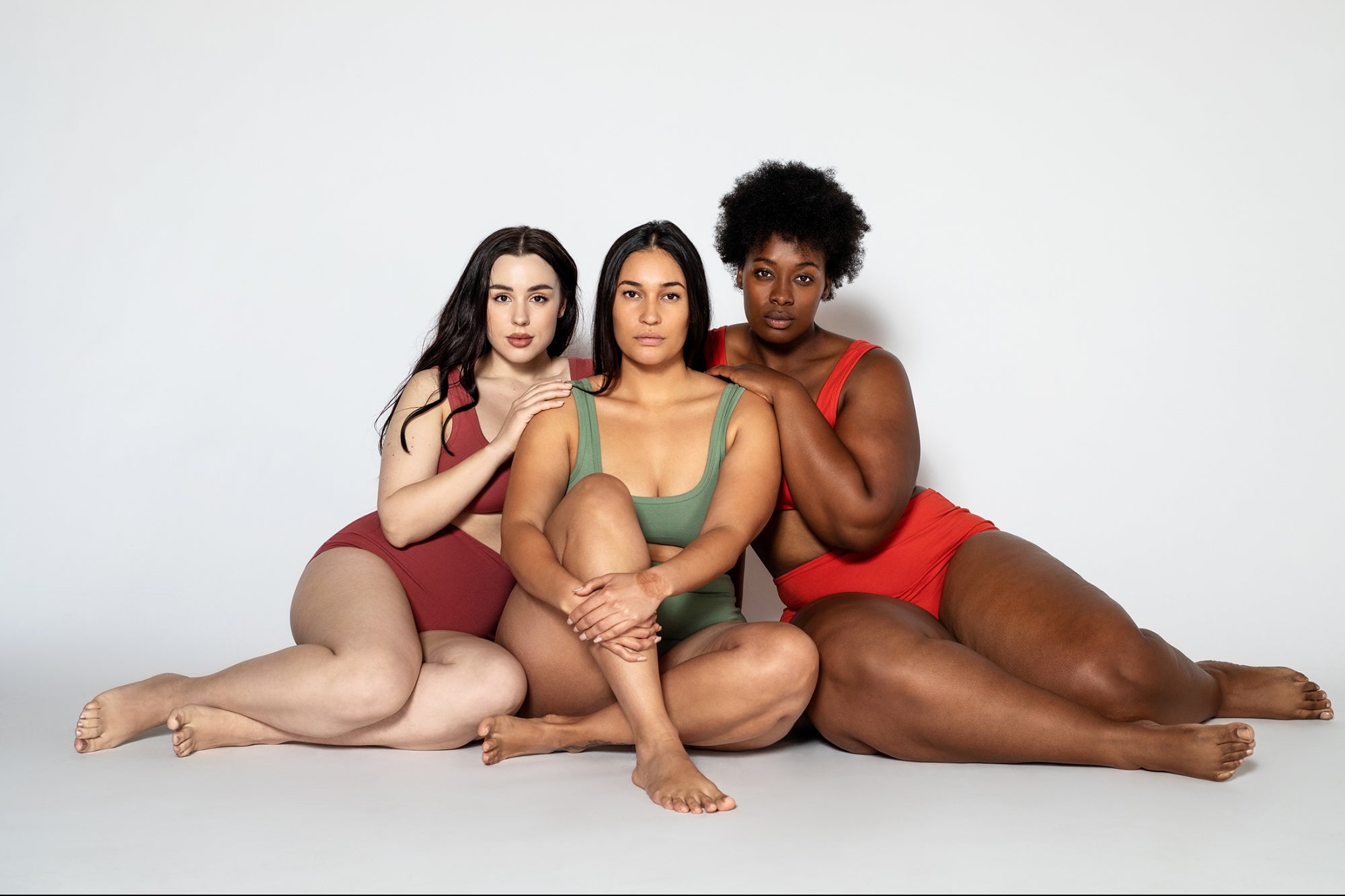Opinions expressed by Entrepreneur contributors are their own.
Take a plus-sized person to the mall and give them three hours to shop. They’ll be back in less than thirty minutes because they already know where to find the two racks of options offered at the same three stores they always visit. Hint: the two racks are usually tucked in the back.
Understanding the inequalities in the fashion industry for larger bodies is merely a first step in the right direction. Fortunately, things have taken a positive turn over the past couple of years. We’re finally beginning to see more and more brands expanding their size offerings and using diverse body types across their campaigns.
Khloe Kardashian‘s fashion-forward company, Good American, whose size range goes from XS to 5XL, was one of the first to give customers the option to view products worn by different models. This allowed shoppers to visualize what the clothes would look like on someone with a similar body type, which was gracefully welcomed by the plus-size community and later adopted by more popular retailers such as Abercrombie and Old Navy.
The power of social media on a brand
Despite this change, creators specializing in beauty and size-inclusive fashion are still getting the shorter end of the stick. Many have been vocal about the pay discrepancy they’ve experienced with top brands. London-based entrepreneur and creative director Abisola Omole spoke about the importance of brands having diverse employees so that their marketing representatives can identify issues that might not be obvious to others. “Industry professionals are often just working with friends, their favorites, and those that look like them. It’s rare that a brand won’t have enough thin, white creators on their diversity breakdown,” Omole said.
Another creator, Remi Bader, who has accumulated over 2M fans on TikTok thanks to her “realistic try-on hauls” where she often exemplifies the reality of limited and inconsistent sizing amongst brands, landed a collaboration with Revolve after posting a try-on haul where most items didn’t fit correctly and in turn asked the company to “do better.” The video went viral and made its way to Revolve’s team, who subsequently decided to bring Bader on board for an exclusive collection to be offered in extended sizes, a pretty big move for a retailer that seems to cater to “straight-sized” customers mainly.
Revolve is not the first or the last company publicly called out for its non-inclusive policies. Gen Z and Millenials are known for holding people accountable and demanding change where change is due, so it is no surprise that they’d collectively “cancel” those companies unwilling to adapt. The responsibility to advocate for a more body-positive fashion industry should not solely fall on plus-sized creators or plus-sized business owners. When asked by her followers why she won’t collaborate with certain brands, nineteen-year-old TikTok star Spencer Barbosa, who wears a size M/6, doesn’t shy away from standing up for inclusivity and rejecting toxic trends, “I will never work with a ‘one size fits all’ company.”
Related: Improving Gender Equality in the Beauty Industry
The ones doing it right
In recent years, and perhaps thanks to the helping hand that digital marketing brings, we’ve noticed an increased amount of indie labels and fashion brands coming to play. Unfortunately, the vast majority still cater to smaller bodies, with size-inclusive companies coming in slowly and far between. WRAY and Girlfriend Collective are two excellent examples of what genuine inclusivity looks like. From the expansive sizing charts to the models used to the diversified content shown on their respective social media feeds, there is no doubt these were companies created with everybody in mind. And their loyal customers know that.
Related: The Business of Harnessing the Power of Social Media
So, why aren’t more companies joining in?
Alex, the founder and CEO of Shiny By Nature, gives us a glimpse at the behind-the-scenes of launching and running a size-inclusive company, “I just looked for manufacturers who aligned with my values and were able to make the size range I wanted, and that was that. It does significantly increase the production cost, but we find it’s worth it because we want to be able to offer our designs in as many sizes as possible.”
When it comes to big name brands refusing to offer inclusive sizing, she adds, “it doesn’t make sense to me because they’re already ordering thousands of pieces, it wouldn’t make that much of a difference for them. I do think they simply don’t want us to have the same fashion options everybody else has, so we’re forced to change our style to fit society’s expectations of how plus-sized people should dress.”
The big, well-established retailers claimed there were not enough plus-sized customers, which we now know is not valid, considering that most women in the US alone are between a size 14-16.
Some brands offer the excuse that inclusive clothing is too expensive. Surely enough, certain manufacturers will upcharge larger sizes by a dollar or two because logic tells us more fabric is needed, but that’s still not a good enough reason to shut the door on a massive community begging to be seen. In conclusion, as Remi put it, companies need to do better.
Related: 7 Ways a Plus-Size Model and CEO Turns Followers Into Sales
